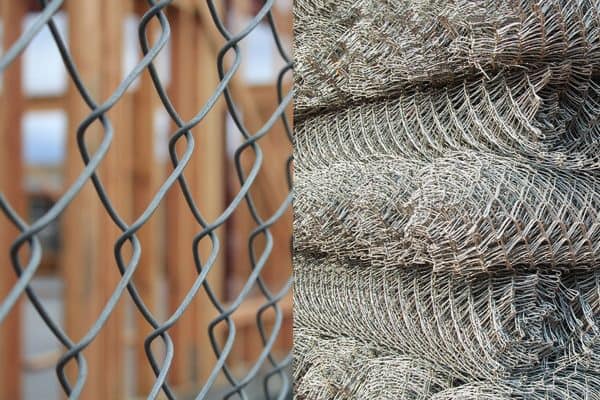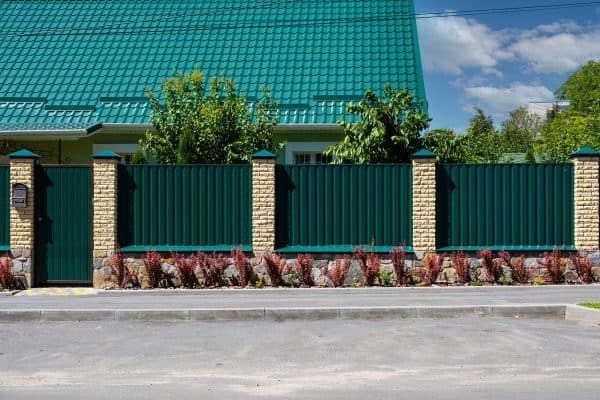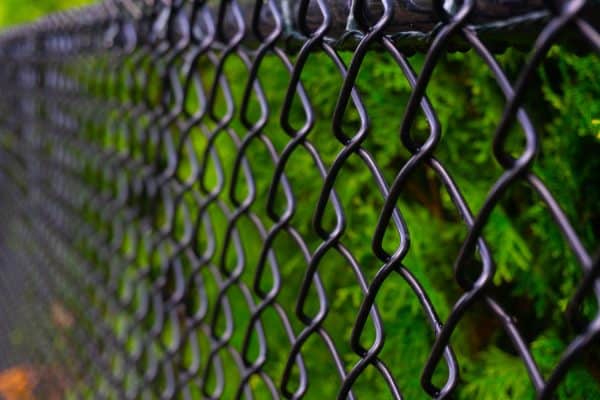Metal wrought iron fences are durable, versatile in design, weather resistant, and demand low maintenance. The general layout, however, does not provide enough privacy. We have researched everything you need to know to accomplish this project!
There are two main ways you can add privacy to your fence:
- permanent fixtures such as pickets or panels, fencing fabrics, and slats,
- or you can simply line it with shrubs, vines, trees and other plants.
If you intend to convert your metal fence to resolve this issue, this article aims to provide the best options.
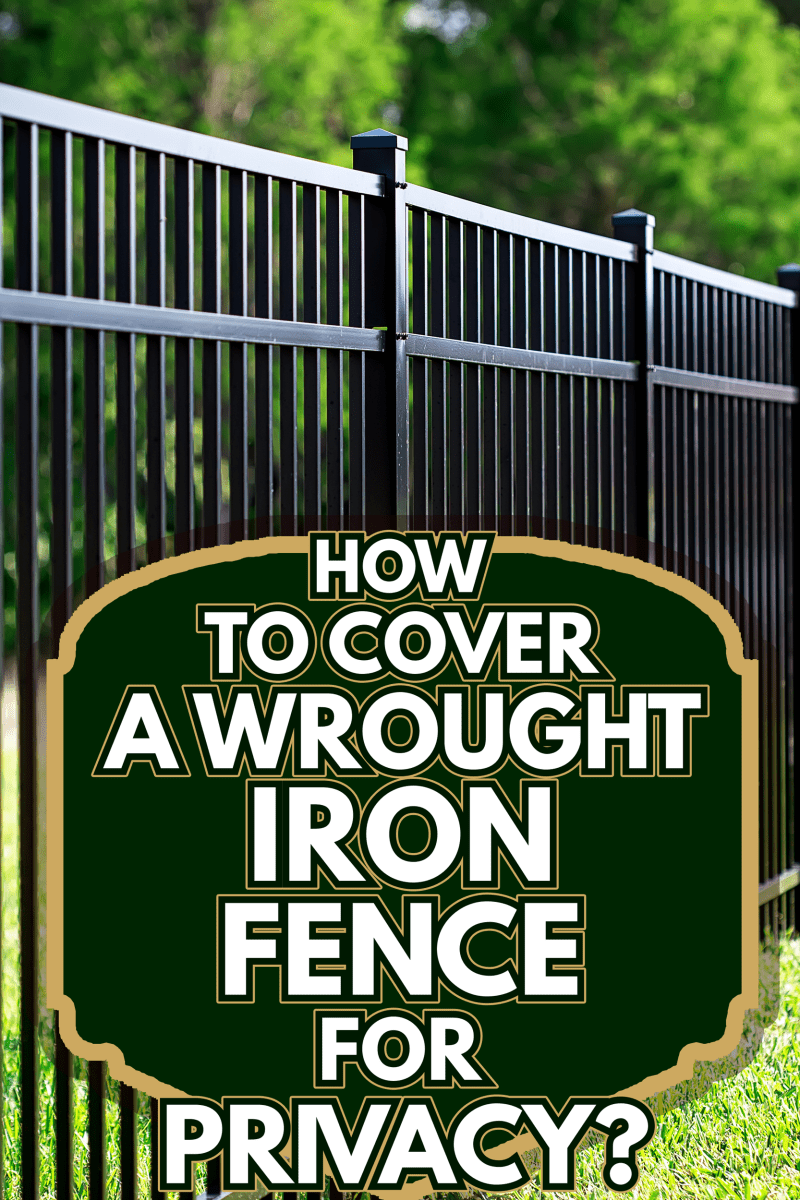
Ways to Add Privacy to a Wrought Iron Fence
Wrought iron fences are noted for their intricate designs and beautiful workmanship, they do not, however, screen your property completely. The following are ways to turn them into privacy fences:
Permanent Fixtures
Pickets or panels and fabrics can be affixed to the existing fence to provide privacy, protection, and safety.
Pickets or Panels
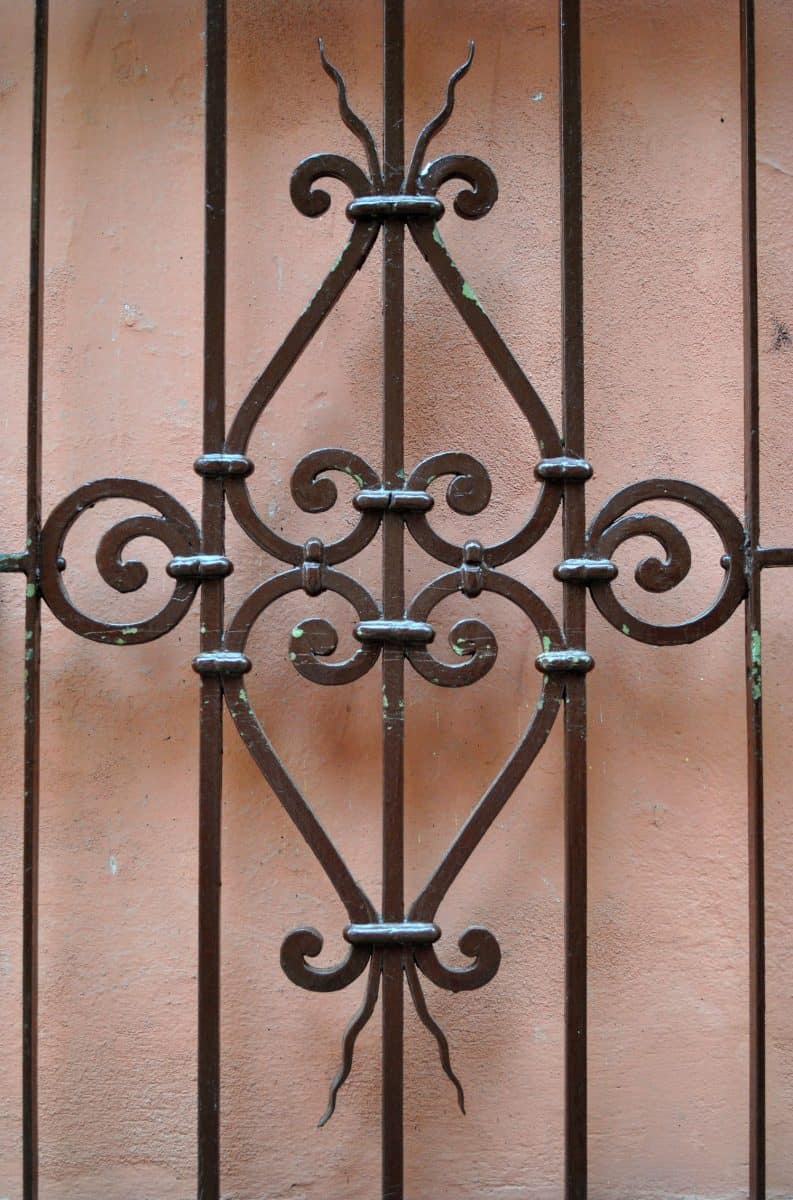
Picket or panel boards are the horizontal components that enclose your fence. Affix them side by side on the existing structure for privacy.
It is best to fasten the boards with galvanized or stainless steel screws. This would make it easier to replace individual panels that could be damaged in time, or if you choose to change the material altogether.
Wood
Wood is a popular choice for panels because of its natural appearance, is easy to work on, and is considerably more affordable than steel, aluminum, or vinyl.
The standard height for panels is 6 feet. But depending on the dimensions of your existing wrought iron fence, you can adjust the panel size so it follows the upper contour.
If you want more privacy, the boards can overlap the height of your fence. The recommended thickness is 1 to 2 inches and a width of 4 to 6 inches. You can make variations to suit the design and appearance you prefer.
Redwood has the best wood quality. It is durable, resistant to weather extremes, and lasts longer than other lumber. But because of its cost, you might consider cedar or pressure-treated pine as suitable options.
You can stain or paint the panels after installation to prolong their lifespan and make the wood more resistant to the elements.
Metal Fence Panels
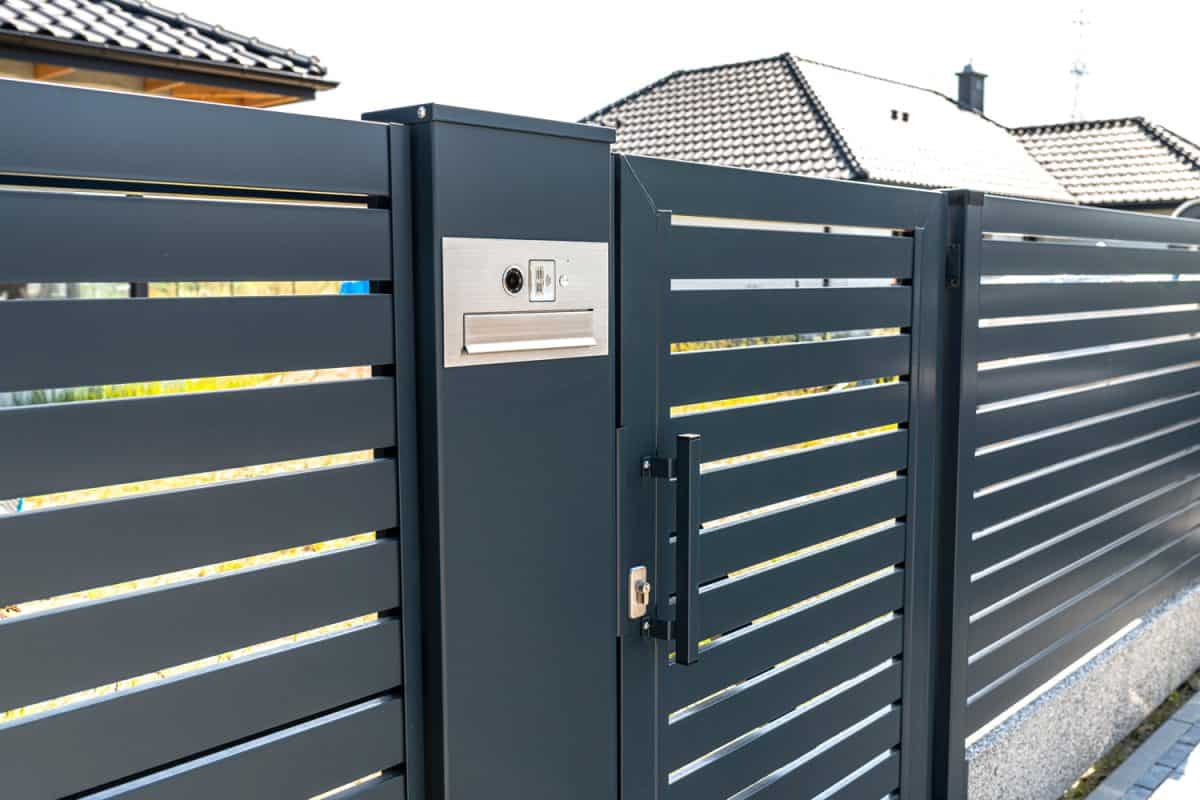
Metal fence panels provide the best privacy, make a stronger barrier, offer more security, and last longer than wood or vinyl. A wide variety of sizes, designs, and other specifications are available. Aside from its general function, you may want to consider the cost.
It is the most expensive material on the market, especially the prefabricated type. Due to the characteristics of metal, it would be wise to get a contractor to ensure proper installation.
Instead of welding, screws and brackets are the best way to attach them as this would prevent damaging the structure of your iron wrought fence.
Aluminum, Vinyl, and Composite Panels
Aluminum, vinyl, and composite panels are other materials you may consider attaching to your fence. Aluminum is a soft metal, lightweight, and easy to mold into different designs. They are simpler to install and require minimal maintenance.
It does not corrode and can withstand all types of weather. Since it is not as strong as other metals, aluminum can dent and bend when hit by objects. It costs more than wood but is affordable compared to other metals.
Vinyl or Polyvinyl Chloride (PVC)
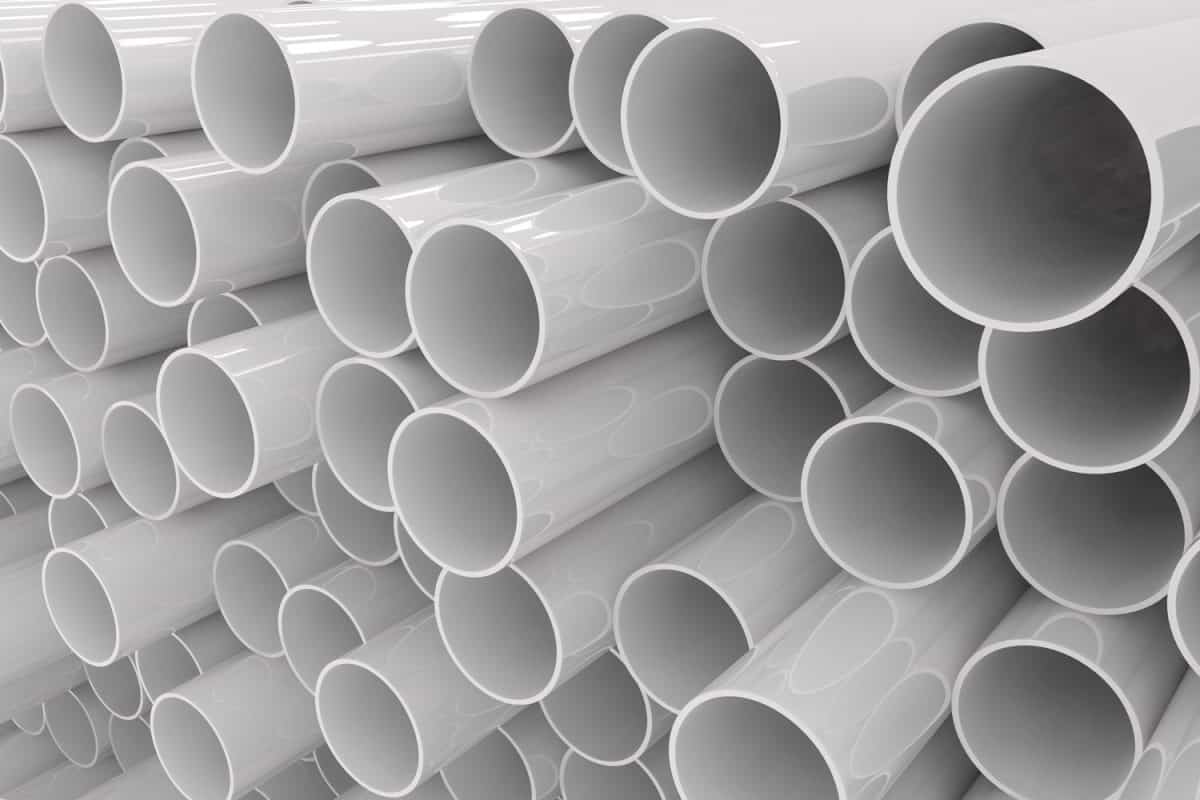
Vinyl or polyvinyl chloride (PVC) is made of hard plastic, making it one of the most durable and preferred materials. It is generally unaffected by weather and lasts considerably longer. Vinyl can be molded and colored to look like wood, keeping the natural appearance of your fence.
It is easy to install and only requires occasional cleaning. The only drawback is the cost, vinyl is the most expensive material available, however, its lifespan may actually save you money.
Composite Materials
Composite materials are a combination of sawdust, wood chips, and recycled plastic. Similar to vinyl, it features a variety of designs or styles, is long-lasting, low maintenance, and resistant to weather and rotting.
Composite materials are meant to be recycled after their lifespan making them eco-friendly. Since it is prefabricated, the durability can vary depending on the manufacturer. If you opt for composite fence panels, it is advisable to research the companies that make them.
Fence Fabrics or Screens
Fence fabrics are made from polypropylene or vinyl. They are rolled out, stretched, and affixed to the fence to improve privacy. There are numerous designs, visibility options, available sizes, and a wide price range.
The most basic types are affordable and provide instant fence covering. Purchase rolls based on the dimensions of your fence. They are easy to install since no cutting or adjusting is necessary, simply anchor them with cables, and you are done.
The main disadvantage of fence or privacy fabric is its durability, you may have to replace it from time to time since it is most susceptible to environmental elements like the weather. Also, it functions mainly to enclose your yard and does not really improve security and safety.
It however, is a good temporary and immediate option if you are saving for a more costly but stronger material.
Plants, Trees, Shrubs, and Vines
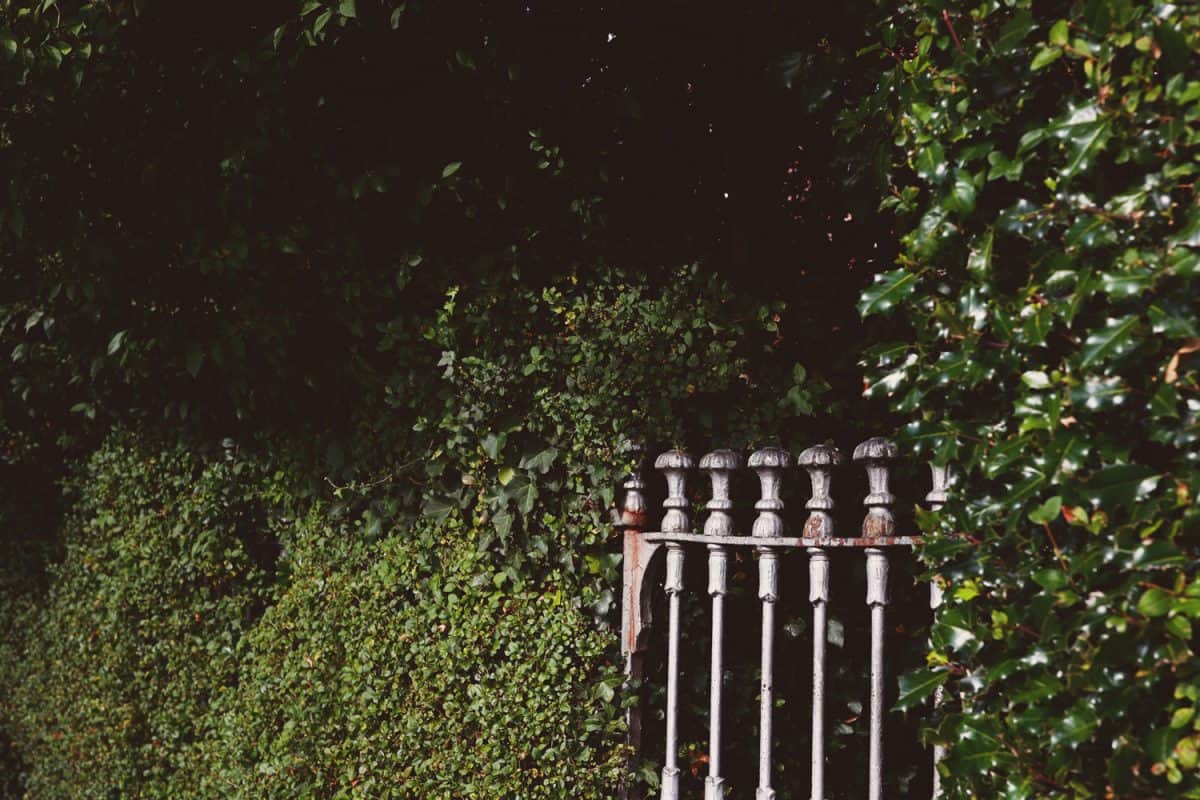
Panels, fabrics, and slats tend to conceal the design and beauty of your wrought iron fence. If you want privacy but would like to preserve its appearance, plants and other greenery are an excellent option.
The simplest way is to use plants to create a secluded area behind your existing fence. If the ground is tiled, made of concrete or any material other than soil, you can line up flower pots, elevated planters or plant boxes that run along the periphery of your fence.
Choose plants that are dense and tall enough for privacy, yet aesthetically pleasing as they will act as the more visible facade of your property. You might also do light research to find out which plants thrive best in your area and climate. This way, you'll have the best result for coverage.
If you do not own the ideal plant, you can consider bamboo which is fast-growing and provides a natural privacy screen quickly. Even when potted or confined to planters, bamboo still grows densely and is tall.
Plant Recommendations & Growing Tips
If it is possible to plant behind your fence, you have several great options of trees, shrubs, and vines.
Trees
Plant trees behind or in front of your wrought iron fence. Cypress, lilac, and juniper are excellent sample choices primarily because of their thick foliage.
Since actually growing them takes time, you can buy trees that are around 4 to 5 feet tall, space them properly, dig deep enough to accommodate the entire root ball, and consider their size when matured.
If your lawn is spacious, you can actually plot 2 to 3 rows of trees, the overlap will result in denser foliage and better privacy.
Shrubs
Grow shrubs by digging holes 2 to 4 feet apart along the side of the fence. Fill them with rapid-growing bush varieties like hydrangeas, privet, and laurel, which make thick and tall hedge plants in no time. Regular shaping and pruning not only enhance its appearance but actually stimulates faster growth.
Vines
For vines, dig several holes around 8 feet apart along the fence base. Plant the most recommended varieties which include ivy and clematis.
You can train and influence the growth by weaving them around the fence and over the posts. Prune the vine regularly to make the foliage more uniform and confined to the structure.
What are other ways to improve the privacy of iron fences?
Other structures may be incorporated into your existing wrought iron fence to improve the privacy of your home.
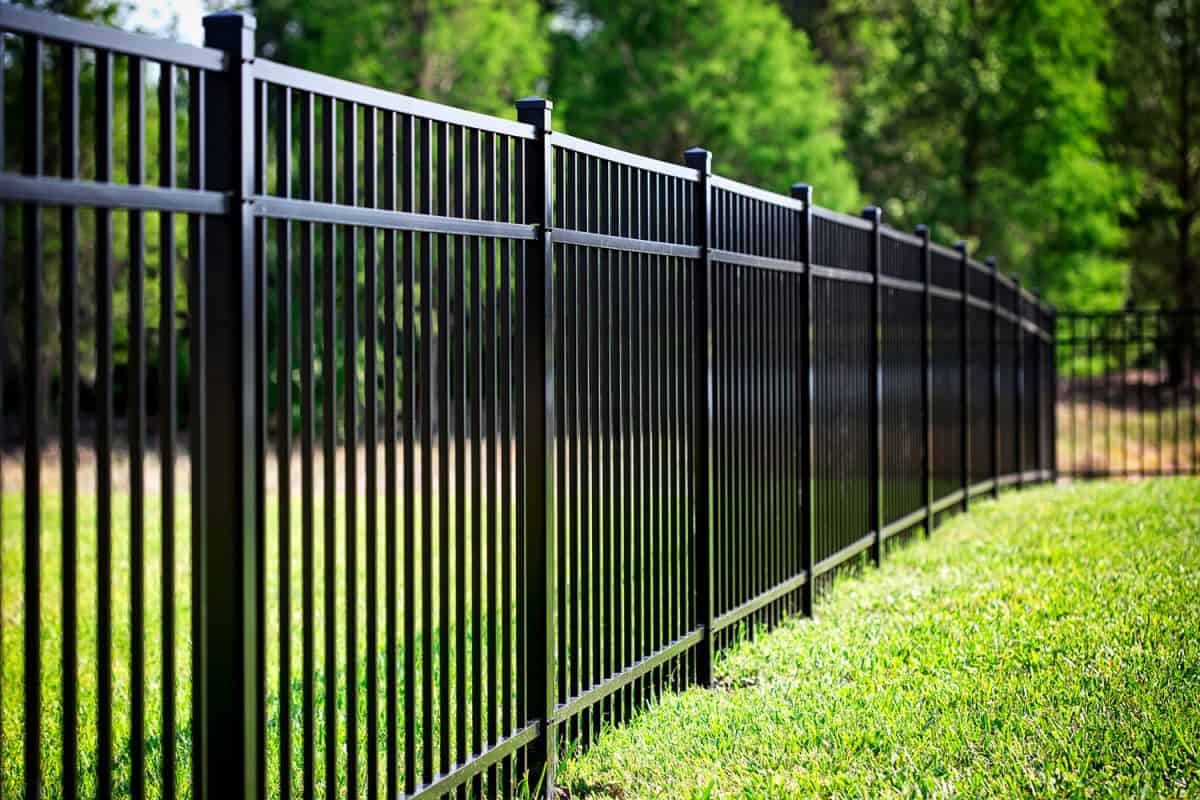
Lattice fencing is a structure that uses intersecting wooden frameworks to form different patterns. Depending on your preferred design, it may be totally enclosed, for optimum privacy, or gapped, to allow vines to scale the frame.
This type of fencing blends well with landscaped lawns because they are decorative and less rigid in appearance.
A garden trellis is similar to a lattice fence, it is designed to allow vines to scale. Most trellises feature protrusions that give your plants more places to propagate making the foliage lusher and thicker.
Finally, you may also use cut bamboo to establish privacy. They blend well as a landscaping component while enclosing the boundaries of your yard.
In Conclusion
You have the choice of adding board panels, fencing fabrics, or plants to improve the privacy of a wrought iron fence. Inasmuch as permanent fixtures are more durable, safer, and more secure, alternative techniques like plants allow you to preserve the existing wrought iron fence and appreciate its beauty.
We hope the article proved helpful, and whatever material you decide on, make it a personal choice! Check out our other great fencing tips:

